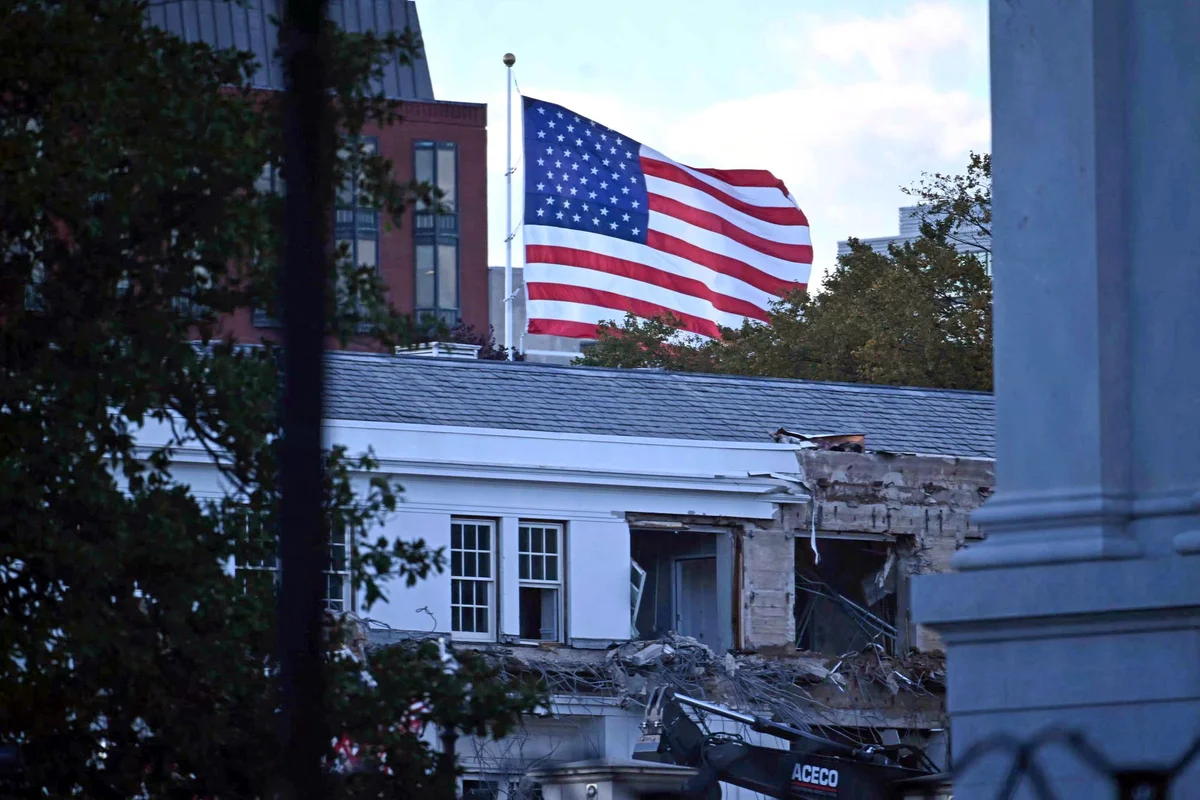Copyright independent

Demolition crews began tearing down parts of the White House’s historical East Wing earlier this week to make way for Donald Trump’s lavish new ballroom. The project is part of a string of renovations that the president has undertaken to both the exterior and interior of the iconic and world-famous building, which are more in keeping with his personal taste. From the paving over of Jackie Kennedy’s world-famous Rose Garden to the return of his “Diet Coke” button in the Oval Office, Trump’s changes have done more than raise eyebrows in certain quarters, with some describing them as “grotesque” and “heartbreaking.” On October 20, construction crews broke ground on the massive, gilded ballroom, which Trump hopes to use for state dinners and other events before the end of his term in 2029, and which will cost a reported $250 million to complete. The ballroom, which will be funded by private donations, is expected to be at least 90,000 square feet, bigger than 1.5 football fields. When finished, it will be able to seat 650 guests. The East Room, currently used for large White House events, has a capacity for 200 seats. It will be the first structural change to “The People’s House” since the addition of the Truman balcony in 1948. The East Wing, built in 1902 and given a second floor under President Franklin Roosevelt in 1942, has traditionally housed the Office of the First Lady and other parts of the White House, including the White House Travel Office and the White House Military Office. The once colorful and meticulously maintained green space, cultivated by Jackie Kennedy in the 1960s, has now been paved over with a white limestone patio, topped with several items of garden furniture. Though the central grassy area that the president claimed was prone to getting muddy has been replaced with tiles, some flowers remain along its border. A new speaker system has been installed. The new Rose Garden also features country club-style chairs, tables, and striped umbrellas – with the New York Times reporting that Trump wanted to “recreate” the experience of his private Palm Beach club, Mar-a-Lago. Indeed, last month the president welcomed guests for an event at the “Rose Garden Club.” Much like the interior of his International Trump hotels, the Oval Office now features new gilded accents, from the ceiling’s crown molding to the side table lamps. Every detail has seemingly been transformed with gold – even the fireplace screen. Portraits of famous Americans hanging in the iconic space have had their frames swapped from wood to intricate gilded ones. CNN reported previously that: “There is gold everywhere: new gold vermeil figurines on the mantle and medallions on the fireplace, gold eagles on the side tables, gilded Rococo mirrors on the doors, and, nestled in the pediments above the doorways, diminutive gold cherubs shipped in from Mar-a-Lago.” Even the remote control for the television down the hall is now reportedly encased in gold. The golden theme has also been continued in Trump’s Cabinet Room, used to hold meetings with his senior leaders and sometimes foreign officials. Golden coverings and trim have been added to the walls, with various other gold items around the room, according to The New York Times. The president has also added ornate chandeliers to the room, as well as more flags for specific military branches, including the U.S. Army, Navy and Air Force. Trump has also installed a Presidential Walk of Fame in an “employee-of-the-month” style, along a prominent walkway outside the West Wing. Black-and-white portraits of the president and his predecessors now appear in gold frames on the wall of the West Wing colonnade, which runs along the paved over Rose Garden. The photos hang in order of administration, meaning there are two images of Trump and two of former President Grover Cleveland, who served as the 22nd and 24th president. In a slight to his direct predecessor, Joe Biden’s portrait has been replaced with a picture of an auto-pen, in reference to Republican allegations that the former president used the device to sign official documents due to his ailing health. Though perhaps more numerous and lavish, Trump is not the only president to make structural changes to the White House. A bowling alley was first installed in 1947 to mark Harry S. Truman's birthday. The two-lane alley was located in the West Wing, near the current Situation Room. This was later removed, but a second alley was built by Richard Nixon – an avid bowler – beneath the White House’s North Portico in 1969. Nixon’s one-lane bowling alley still exists and is sometimes open to White House staff and guests, though it is not part of public tours. The 37th president also converted a third-floor presidential bedroom into a billiards room. Years later, President Barack Obama, also a big fan of sports, had the White House tennis court adapted for full-court basketball, with painted lines and removable hoops. He was known to play with staff members and to relax during stressful times, including before the results of his re-election campaign in 2012. More significant historical changes included the construction of the Oval Office itself, which was first used by President William Howard Taft in October 1909. After his inauguration, Taft held a competition to select an architect to design a permanent executive office, according to the White House Historical Association. Nathan C. Wyeth was selected, and modeled the new president's office after the White House's most famous oval-shaped room – the Blue Room.



